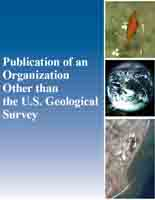Visioning and conceptual framework for coordinating Great Lakes connecting waters research and monitoring
Links
- More information: Publisher Index Page (via DOI)
- Download citation as: RIS | Dublin Core
Abstract
The Laurentian Great Lakes are connected via naturally occurring straits and rivers: St. Marys River, Straits of Mackinac, St. Clair-Detroit River System, Niagara River, and the St. Lawrence River. Despite the historical ecological and economic importance of these waters, international agreements (e.g., Great Lakes Water Quality Agreement) only recently explicitly named the Great Lakes Connecting Waters (GLCWs), requiring governments to address the challenges of adequate restoration and protection from historical use and degradation. Standardized research and monitoring activities are needed; however, there is no established mechanism for coordination across the GLCWs. A three-day summit in 2023 convened experts to form the initial framework for a GLCWs Collaborative to increase standardizations and knowledge transfer. Participants drafted a governance structure and priorities following the principles of collective impact but allowed for place-based specificity for local connecting water organizations. Priorities and suggestions for success included: 1) co-development of the collaborative with all rights holders, stakeholders, and surrounding communities; 2) investment in research and technology specific to GLCWs; 3) investment in information transfer and training; 4) increased communication; and 5) better integration into existing Great Lakes research, monitoring, and funding programs. Expanding participation in all local GLCWs organizations with principles of inclusivity was identified as a larger collaborative goal. Next steps in the development of a GLCWs Collaborative include increased communication and formation of working groups and obtaining funding for a dedicated organization to begin supporting activities (communication, facilitation, logistics). By using a deliberate process for establishment, the potentially slower time frame for establishment may result in increased participation and success.
Study Area
| Publication type | Article |
|---|---|
| Publication Subtype | Journal Article |
| Title | Visioning and conceptual framework for coordinating Great Lakes connecting waters research and monitoring |
| Series title | Journal of Great Lakes Research |
| DOI | 10.1016/j.jglr.2025.102605 |
| Edition | Online First |
| Publication Date | May 26, 2025 |
| Year Published | 2025 |
| Language | English |
| Publisher | Elsevier |
| Contributing office(s) | Great Lakes Science Center |
| Country | Canada, United States |
| Other Geospatial | Laurentian Great Lakes |


